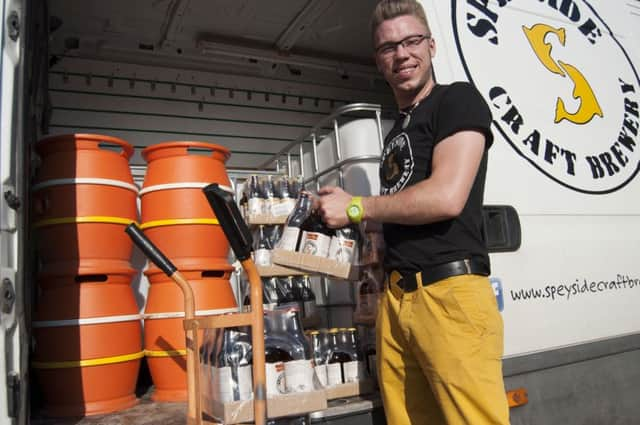Number of Scottish breweries at highest level in a century


A total of 115 were in operation by the end of 2016, compared to 93 in the previous year, figures shared with The Scotsman by the Campaign for Real Ale (CAMRA) have revealed.
The total number of breweries across the UK grew from 1,424 to 1,540 in the same period.
Advertisement
Hide AdAdvertisement
Hide AdDespite the rapid number of openings in recent years, industry insiders predict there is still room for further expansion, with Scotland yet to reach “peak beer”.


“This explosion in brewing is a direct response to a more discerning beer consumer which demands a wide range of beers – from the palest golden ale to the darkest, richest stout,” said Sarah Bellis, Camra’s director for Scotland.
“It is fantastic to see such strong growth in the Scottish brewing sector with now over 100 breweries north of the Border.
“The beer revolution rolls on and appears to be unstoppable with more and more Scottish breweries opening to keep up with the demand for full-bodied and flavoursome beers.
“We hope beer drinkers across Scotland will take time to try a new locally brewed real ale to celebrate this great success in the new year.”


The peak number of breweries in Scotland was reached in 1840 when 280 were recorded. That number steadily dwindled over the next 150 years, largely a result of rival companies merging.
By 1910, 92 breweries were left in operation, dropping to a total of 63 in 1920, according to the Scottish Brewing website.
In contrast to the vast super breweries of the late 20th century, such as the now closed McEwan’s plant in Fountainbridge, the majority of modern breweries employ just a handful of full-time employees.
Advertisement
Hide AdAdvertisement
Hide AdInstead of selling direct to pubs, many rely upon promoting their products at beer festivals in order to attract the attention of commercial buyers such as supermarkets.
One exception is Ellon-based BrewDog, established in 2007, which employs more than 500 staff and operates a chain of bars worldwide.
More typical of the new era of smaller-scale brewers in Scotland is Speyside Craft Brewery, which opened in a region more traditionally associated with whisky in 2012.
Founded by chemistry graduate Seb Jones, the business has reported strong sales growth and rising interest from overseas.
“We were the first brewery to open on Speyside in a decade,” said Jones. “But shortly after we opened, another three soon followed, which shows how quickly new businesses are appearing.
“When we opened in 2012 as we could see what was happening elsewhere in the UK, and particularly across the Atlantic, with the massive growth in craft breweries.
“I don’t think Scotland, or the UK in general, has reached ‘peak beer’ yet.
“In years gone by, you might struggle to find more than three or four beers in one particular town. Now most will have at least one that is locally produced.
Advertisement
Hide AdAdvertisement
Hide Ad“There’s more development opportunities to be had, particularly on the north-west coast, where it makes more sense to produce beer locally than transport it from elsewhere.”
He continued: “The appetite for beer is increasing and people’s curiosity about the expanded range of beers produced across the country is growing. New breweries are not afraid to experiment and try new things.”